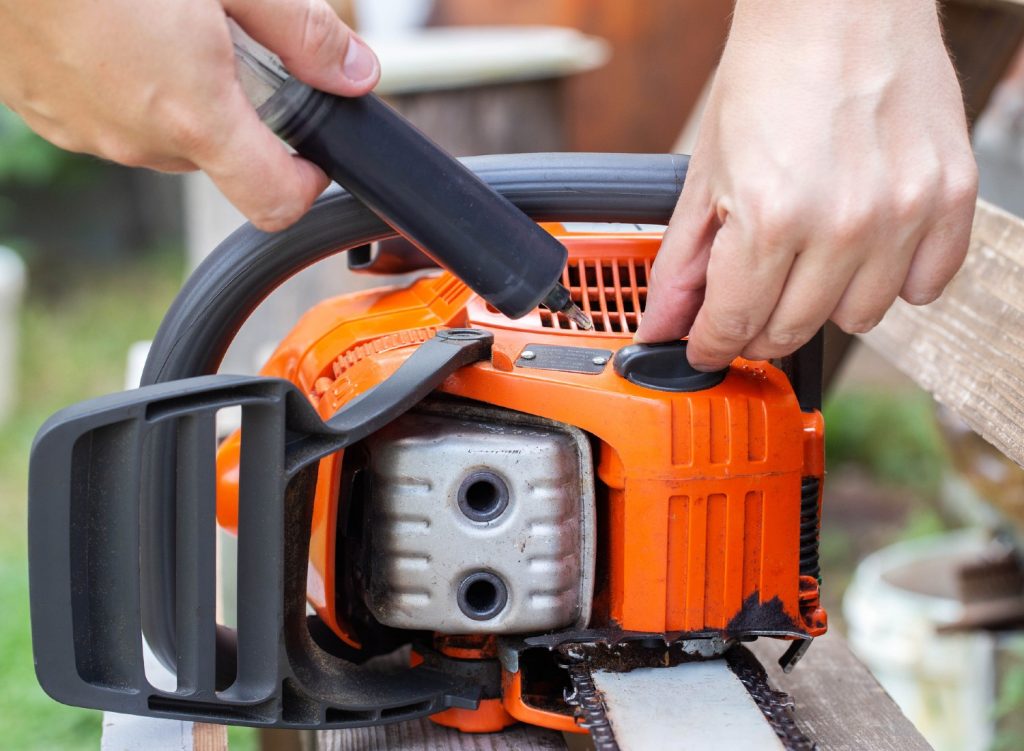Chainsaw Oiling: How to Safely Lubricate the Bar and Chain

Chainsaws, with their formidable cutting prowess, are indispensable tools for those tackling wood-cutting tasks. Yet, the key to their sustained efficiency lies in meticulous maintenance. Among the crucial facets of upkeep is the proper lubrication of the chainsaw’s bar and chain. In this comprehensive guide, we’ll unravel the significance of chainsaw oiling and provide a detailed, step-by-step approach to ensure both safety and effectiveness.
Understanding the role of lubrication is pivotal, as it not only enhances the tool’s longevity but also averts potential hazards during operation. So, let’s delve into the world of chainsaw maintenance, demystifying the art of safely lubricating the bar and chain for optimal performance.
Why Lubrication Matters
Before diving into the how-to, it’s essential to understand why lubrication is crucial for your chainsaw’s bar and chain. The bar and chain operate at high speeds, generating significant heat due to friction. Without proper lubrication, this heat can cause premature wear and damage to the chain, bar, and sprocket.
Chainsaw oil serves multiple purposes in this scenario. It acts as a coolant, reducing the heat generated by friction during cutting. Additionally, it provides essential lubrication, reducing wear on the chain and bar, and helps to prevent kickback—a potentially dangerous situation where the chain catches on the wood and kicks the chainsaw back toward the operator.
Choosing the Right Chainsaw Oil
Selecting the appropriate chainsaw oil is crucial for effective lubrication and overall chainsaw performance. Chainsaw oils come in two main types: standard and biodegradable. Standard chainsaw oils are petroleum-based and provide excellent lubrication, while biodegradable oils are more environmentally friendly.
It’s essential to choose an oil specifically designed for standard and cordless chainsaws, as regular motor oil or other substitutes may not provide the necessary lubrication and may cause damage to your equipment. Check your chainsaw’s user manual for the manufacturer’s recommendations on the type of oil to use.
Step-by-Step Guide to Chainsaw Oiling
Now, let’s walk through the process of safely lubricating your chainsaw’s bar and chain.
Safety First
Before beginning any maintenance, ensure your chainsaw is powered off and the spark plug is disconnected. Wear appropriate personal protective equipment, including gloves and safety glasses.
Locate the Oil Cap
Identify the oil reservoir on your chainsaw. The oil cap is usually near the bar and chain assembly. Consult your user manual if you’re unsure about its location.
Empty or Refill the Oil Reservoir
If the oil reservoir is low, empty it before refilling to prevent mixing different types of oil. Use a funnel to pour the recommended chainsaw oil into the reservoir. Avoid overfilling, as it can lead to excessive oil consumption and mess.
Adjust the Oil Flow
Some chainsaws come equipped with an adjustable oil flow feature. Consult your user manual to determine if your chainsaw has this option. Adjust the flow according to your cutting conditions – higher for tougher wood and lower for lighter tasks.
Inspect the Bar and Chain
Before starting your chainsaw, inspect the bar and chain for any visible signs of wear, damage, or loose components. Tighten the chain if necessary, ensuring it has the correct tension.
Start the Chainsaw
Start the chainsaw after refilling the oil reservoir and inspecting the bar and chain. Allow it to run for a few moments to ensure the oil is circulating adequately.
Check the Oil Distribution
While the chainsaw is running, observe the oil distribution on the bar and chain. The lubrication should be even along the entire length. If you notice uneven oiling, adjust the oil flow or inspect for any clogs in the oiling system.
Shutdown and Clean
After completing your cutting tasks, power off the chainsaw and clean any debris from the bar and chain. This prevents buildup that can impede the oiling system and cause premature wear.
Conclusion
Regular chainsaw oiling is a simple yet vital aspect of maintaining your chainsaw and ensuring its optimal performance and longevity. By following these steps and using the right chainsaw oil, you can keep your equipment running smoothly, reduce the risk of wear and tear, and enhance overall safety during operation. Take the time to incorporate proper lubrication into your chainsaw maintenance routine, and you’ll enjoy the benefits of a well-maintained and efficient tool for years to come.
